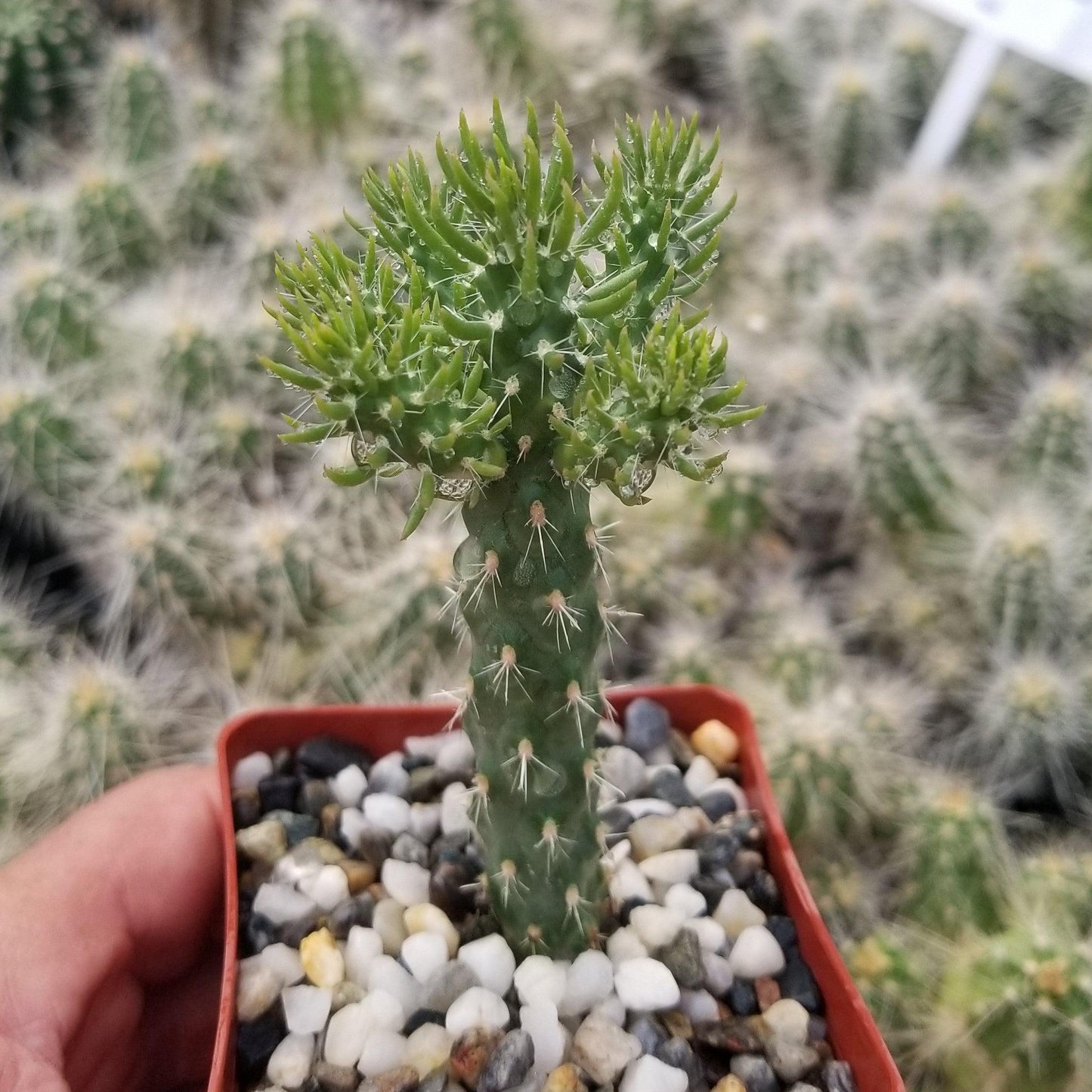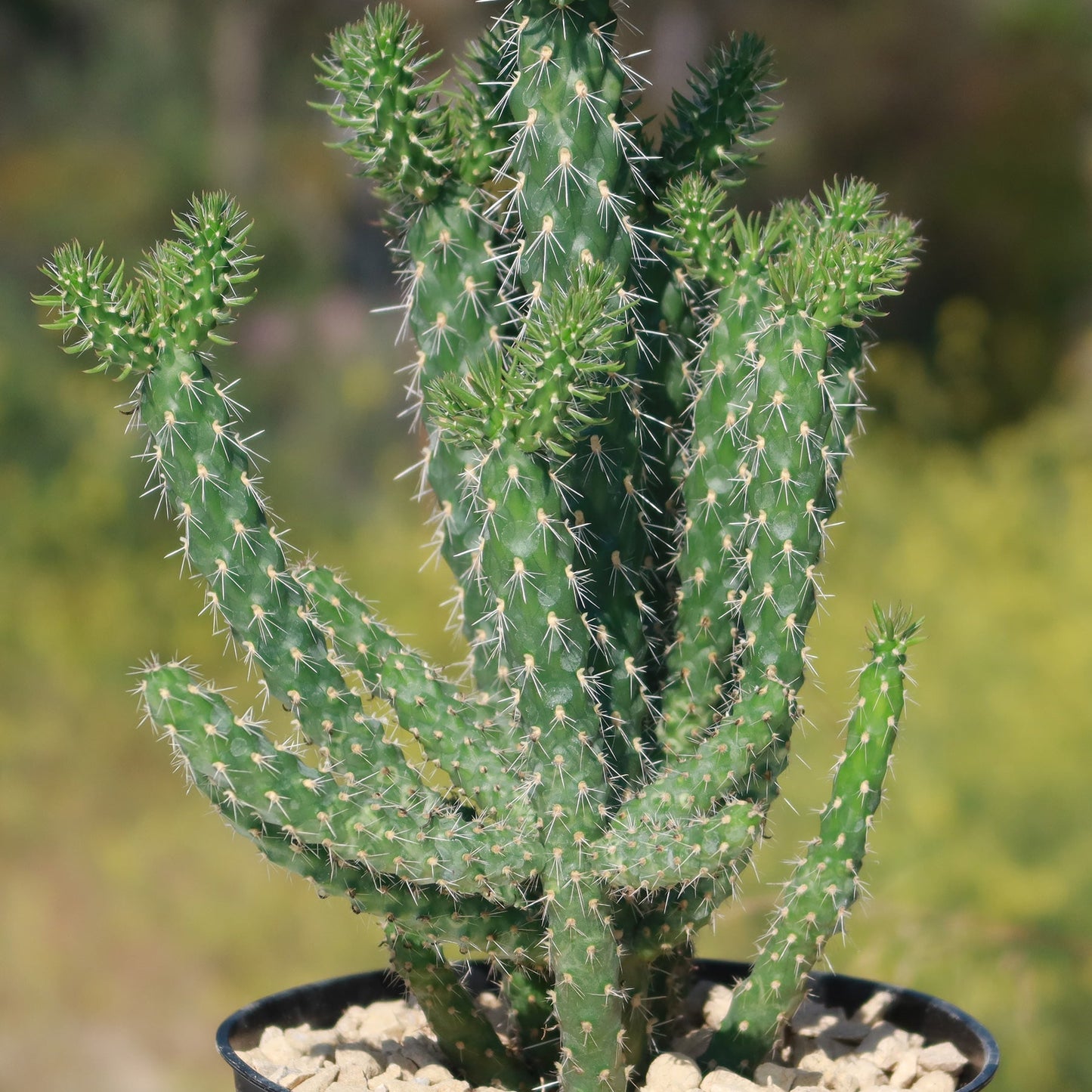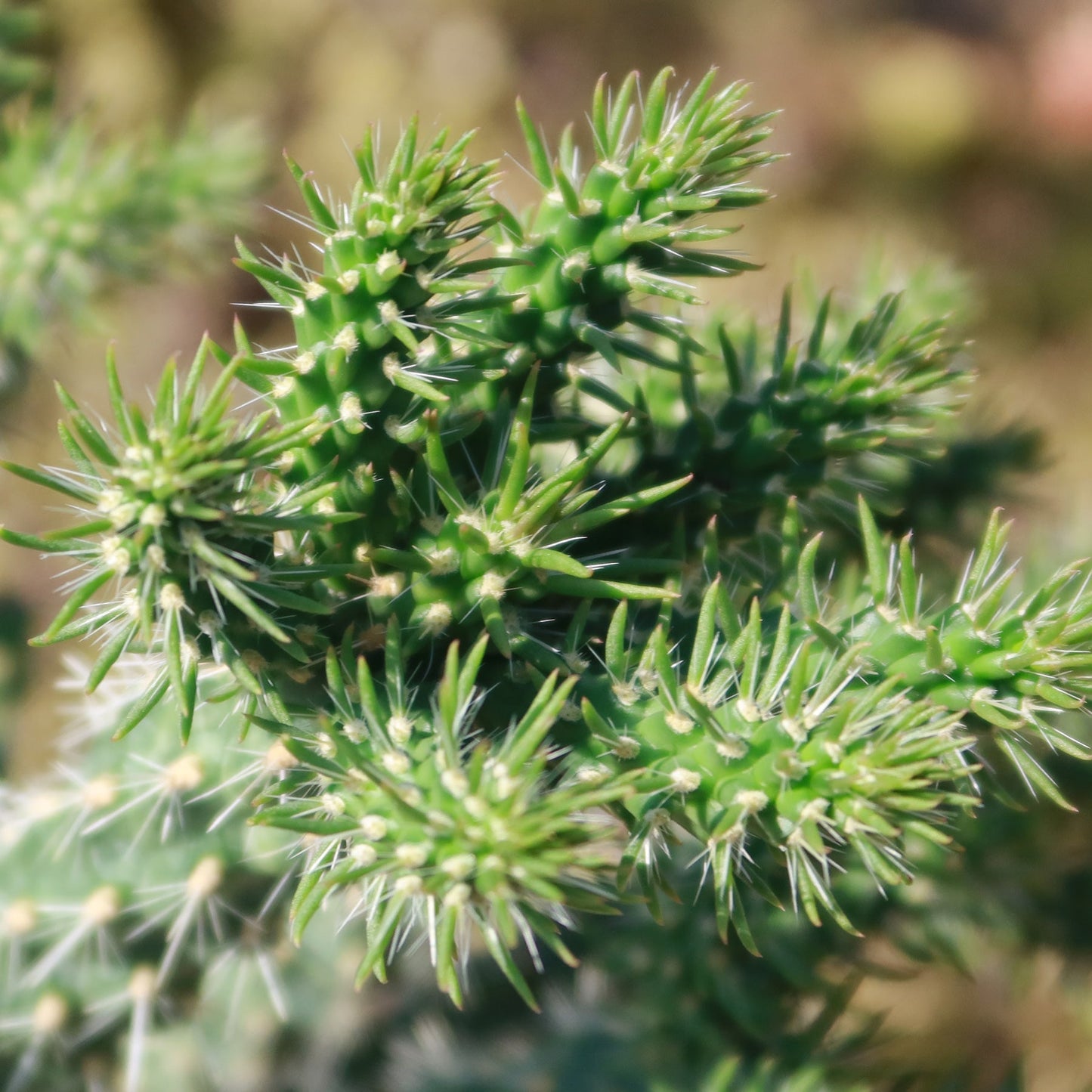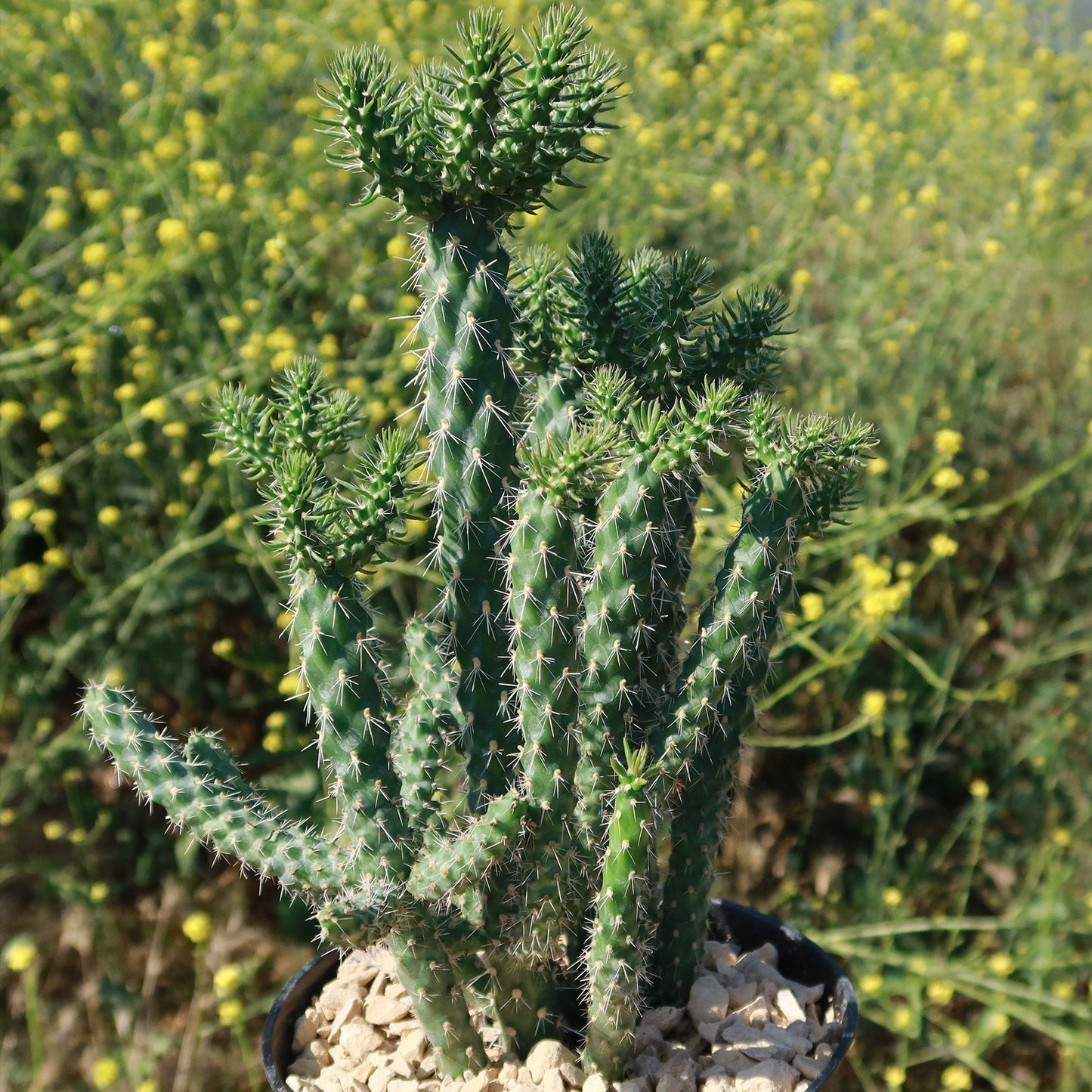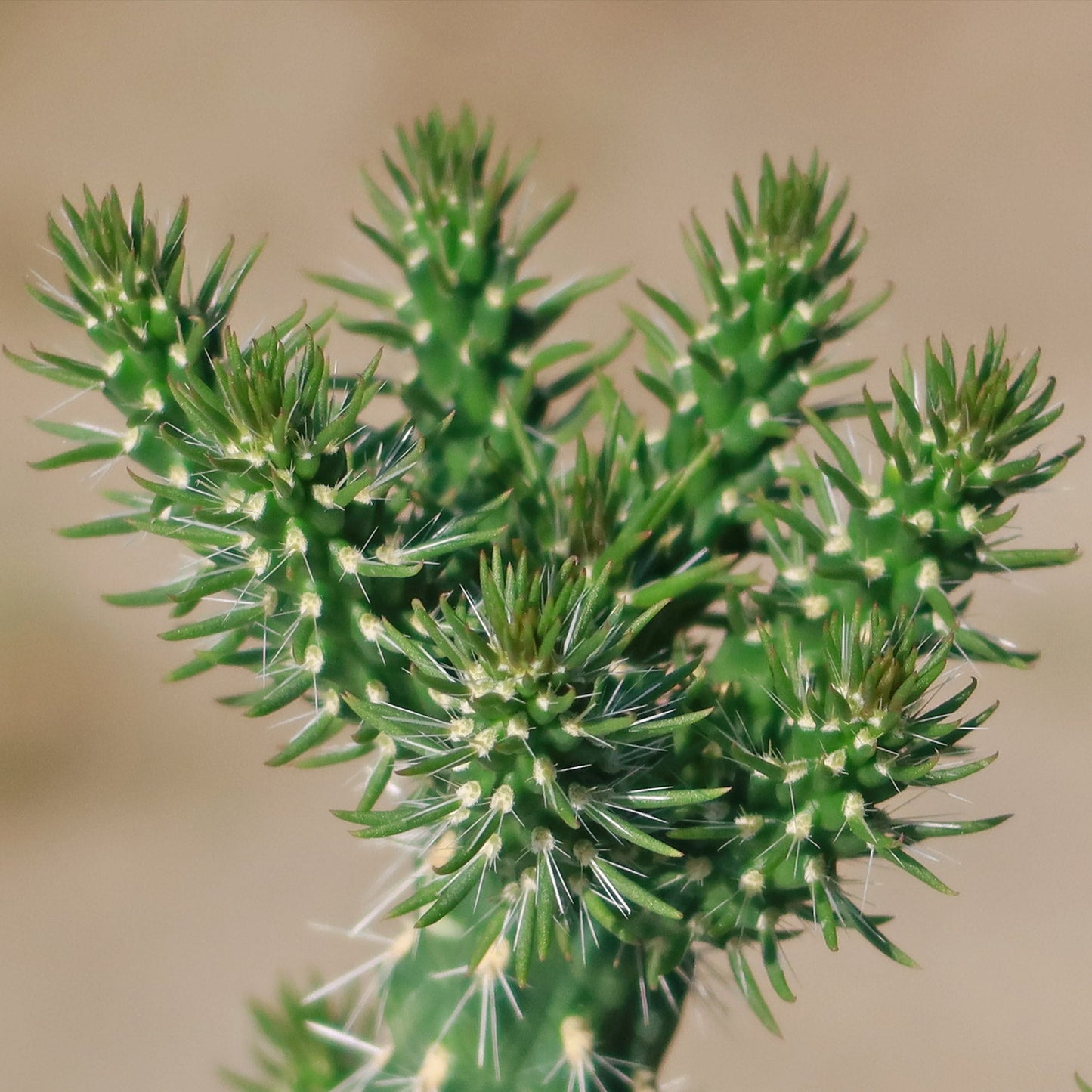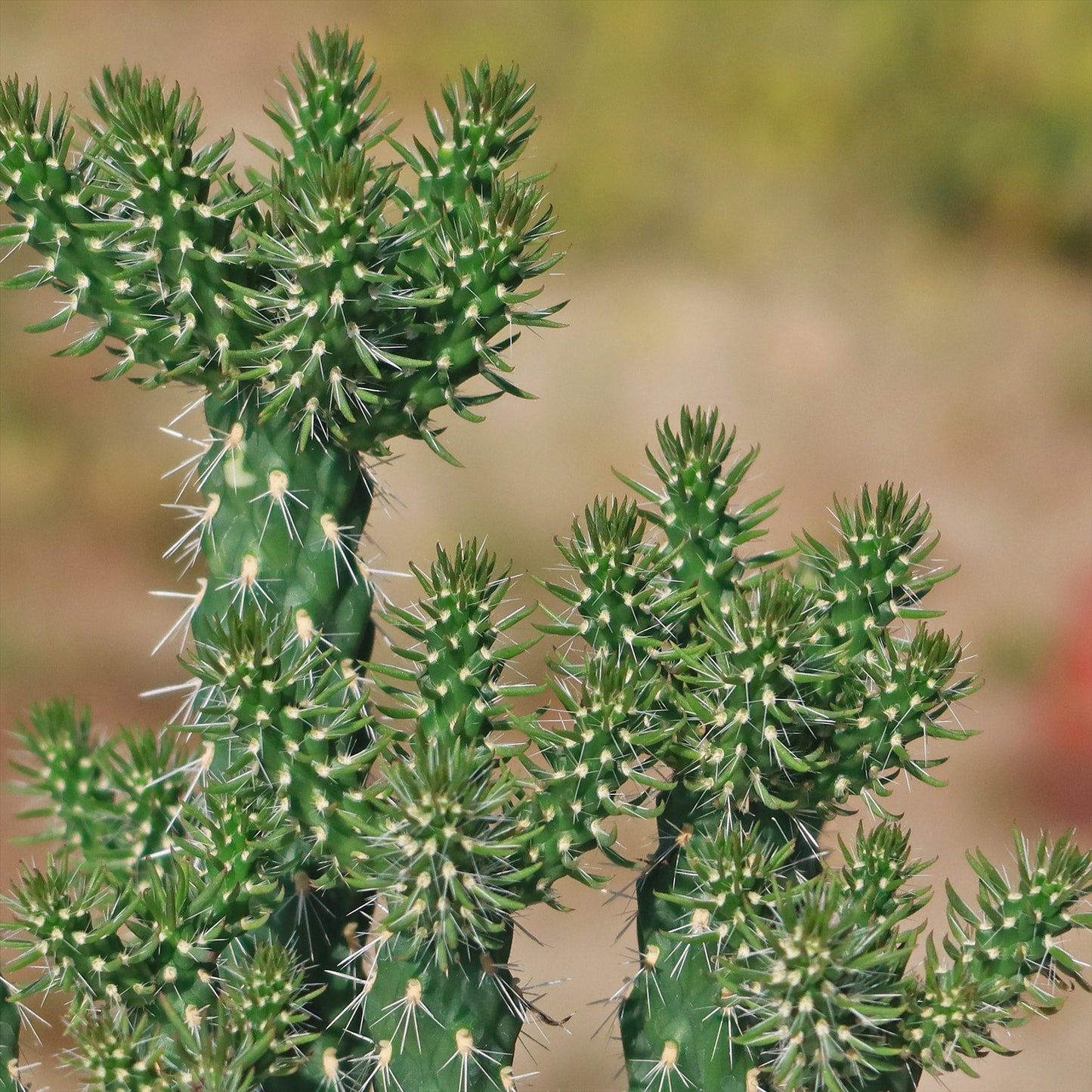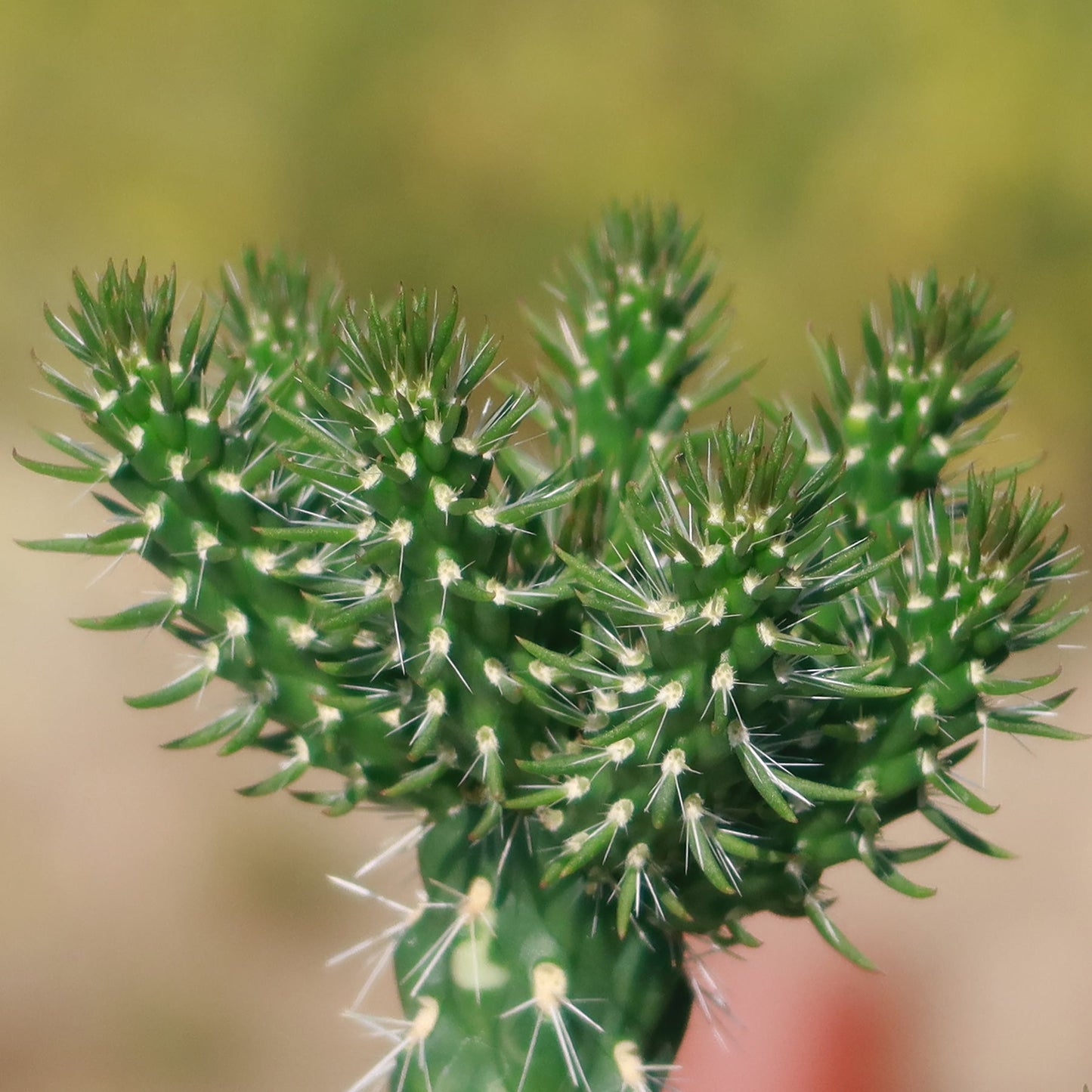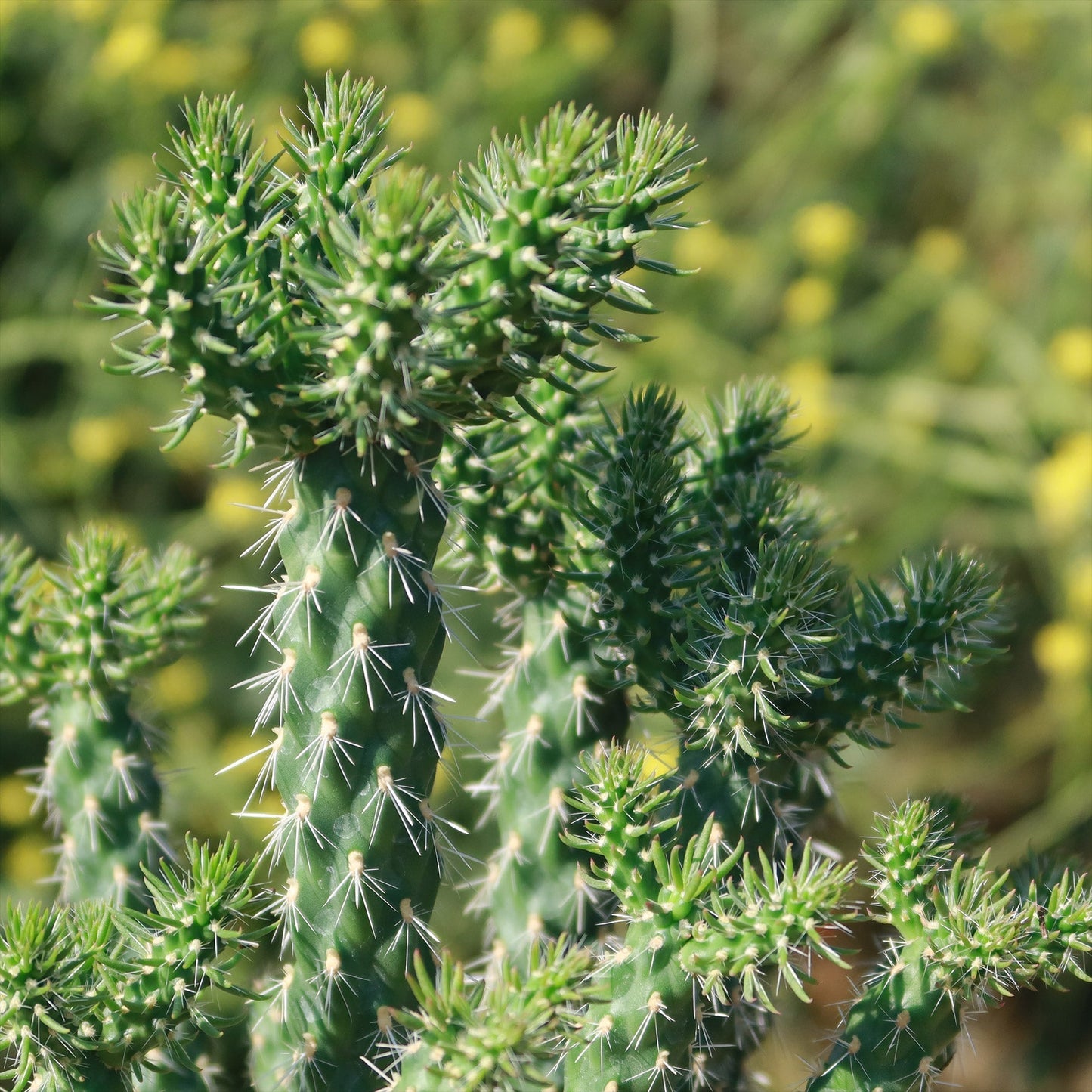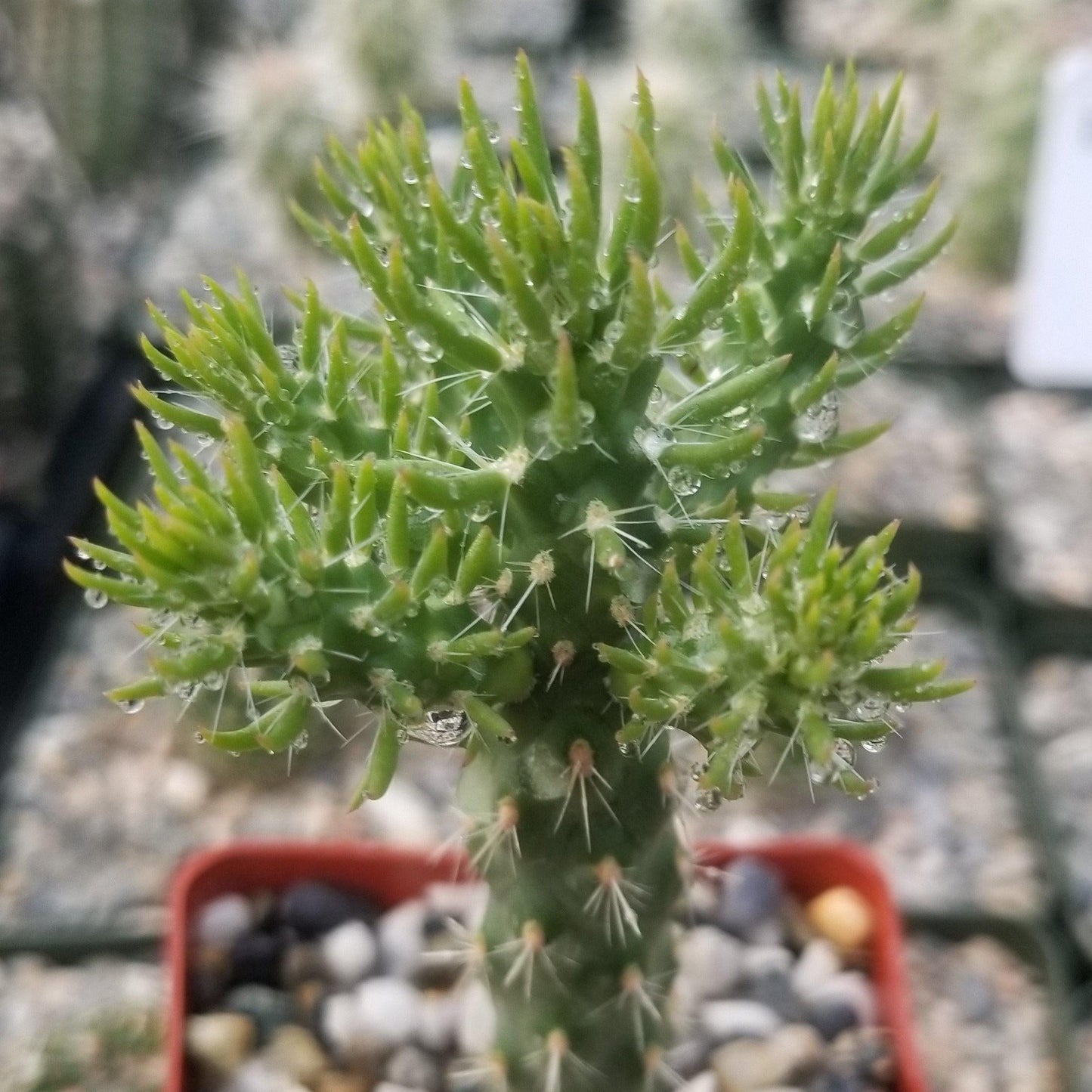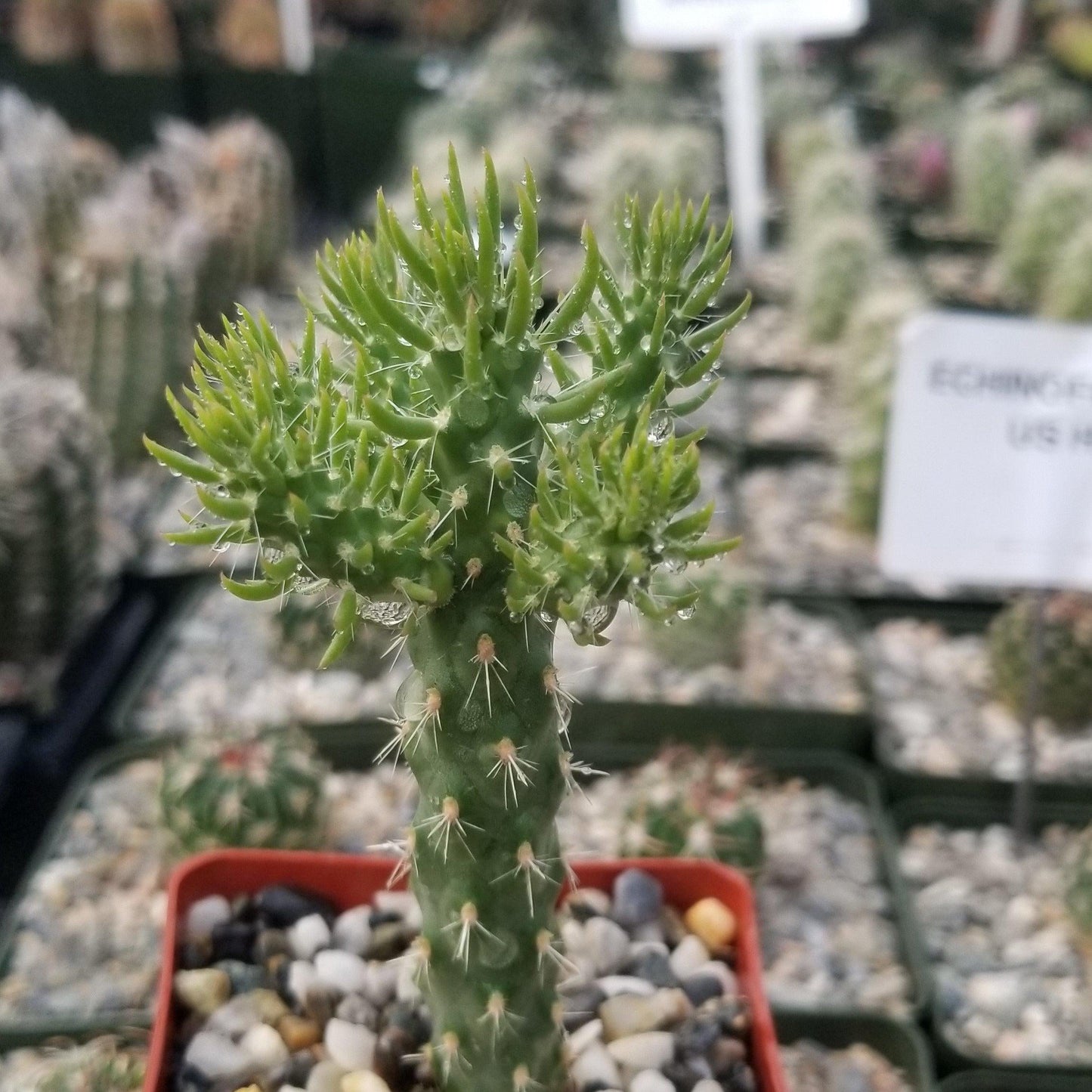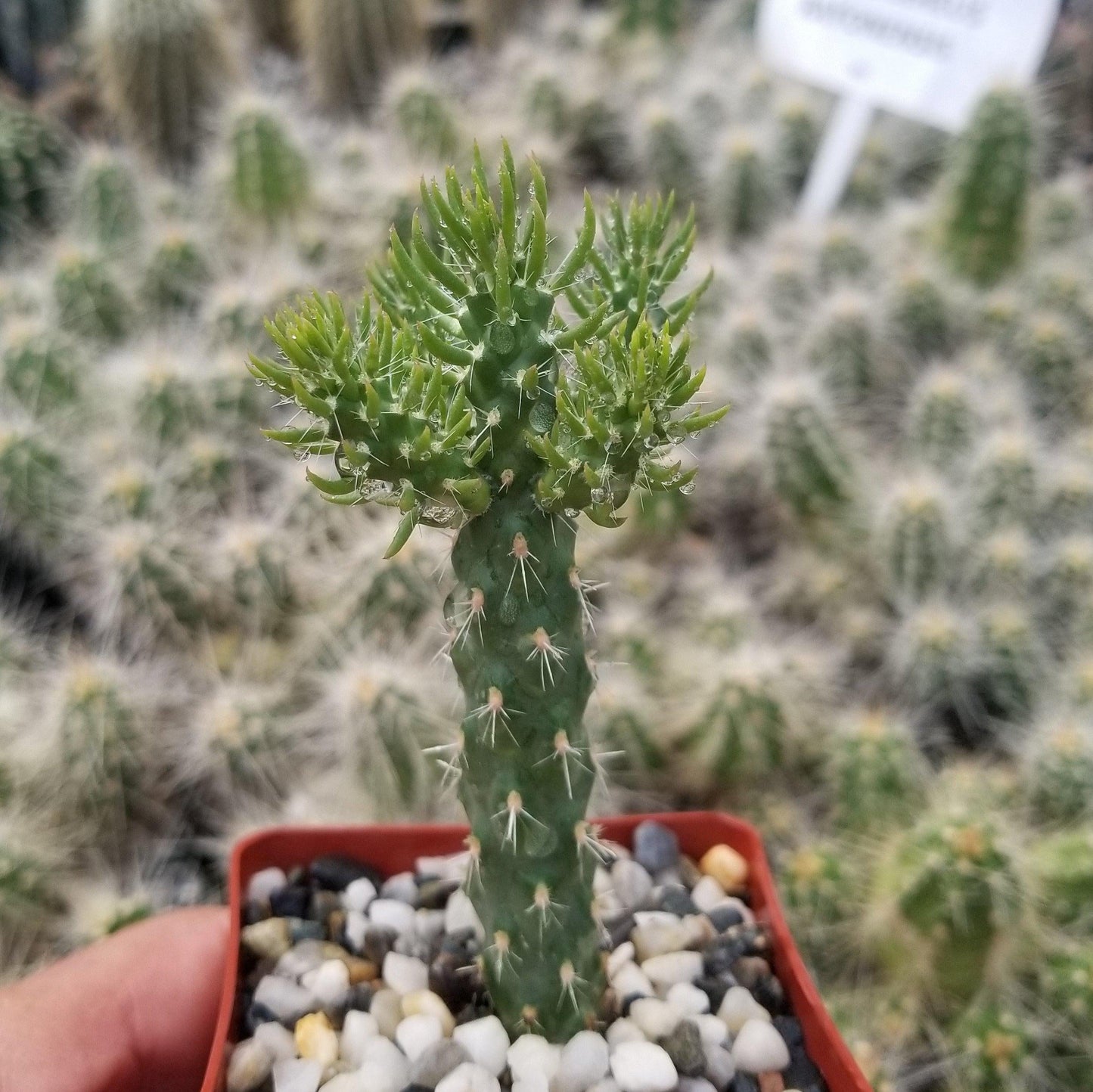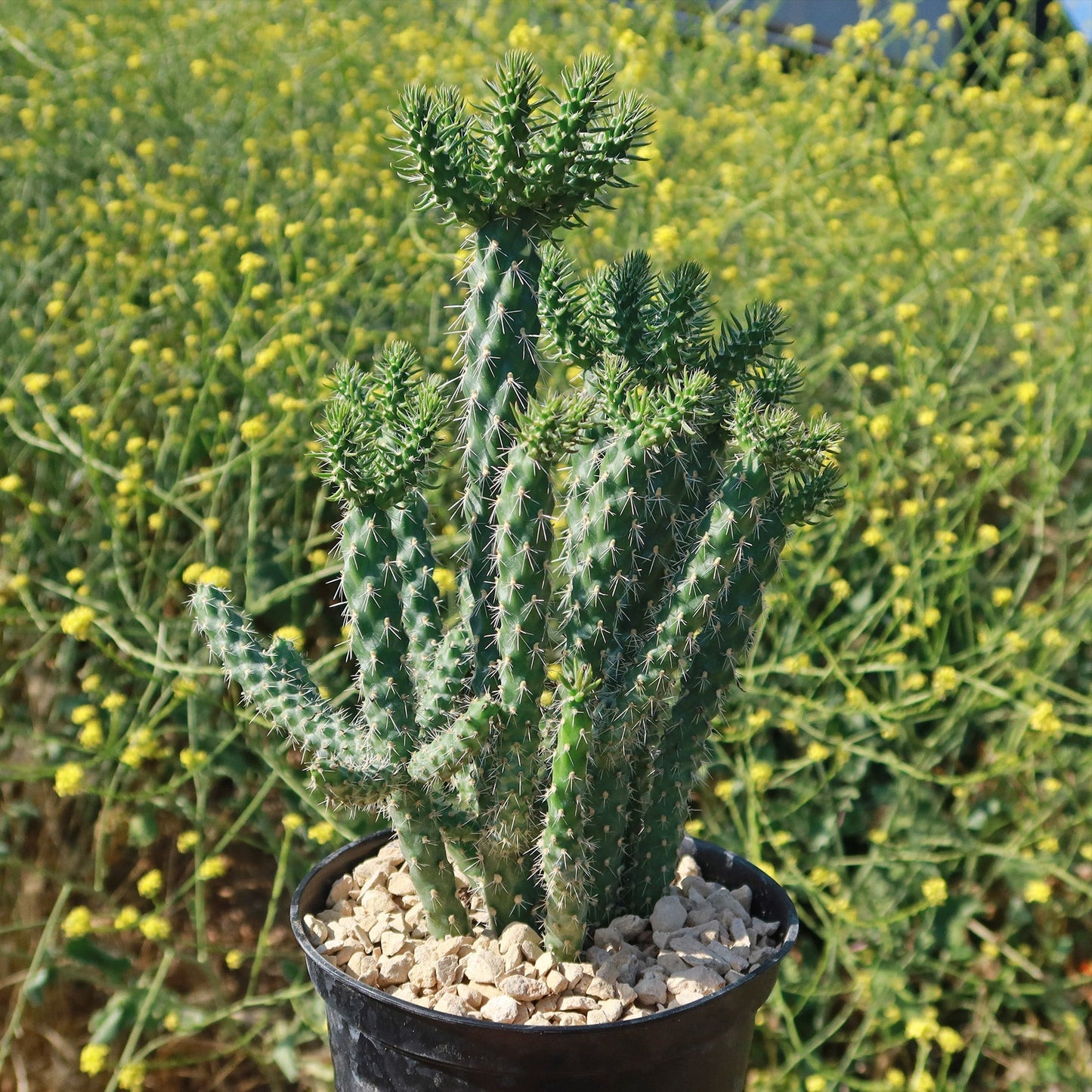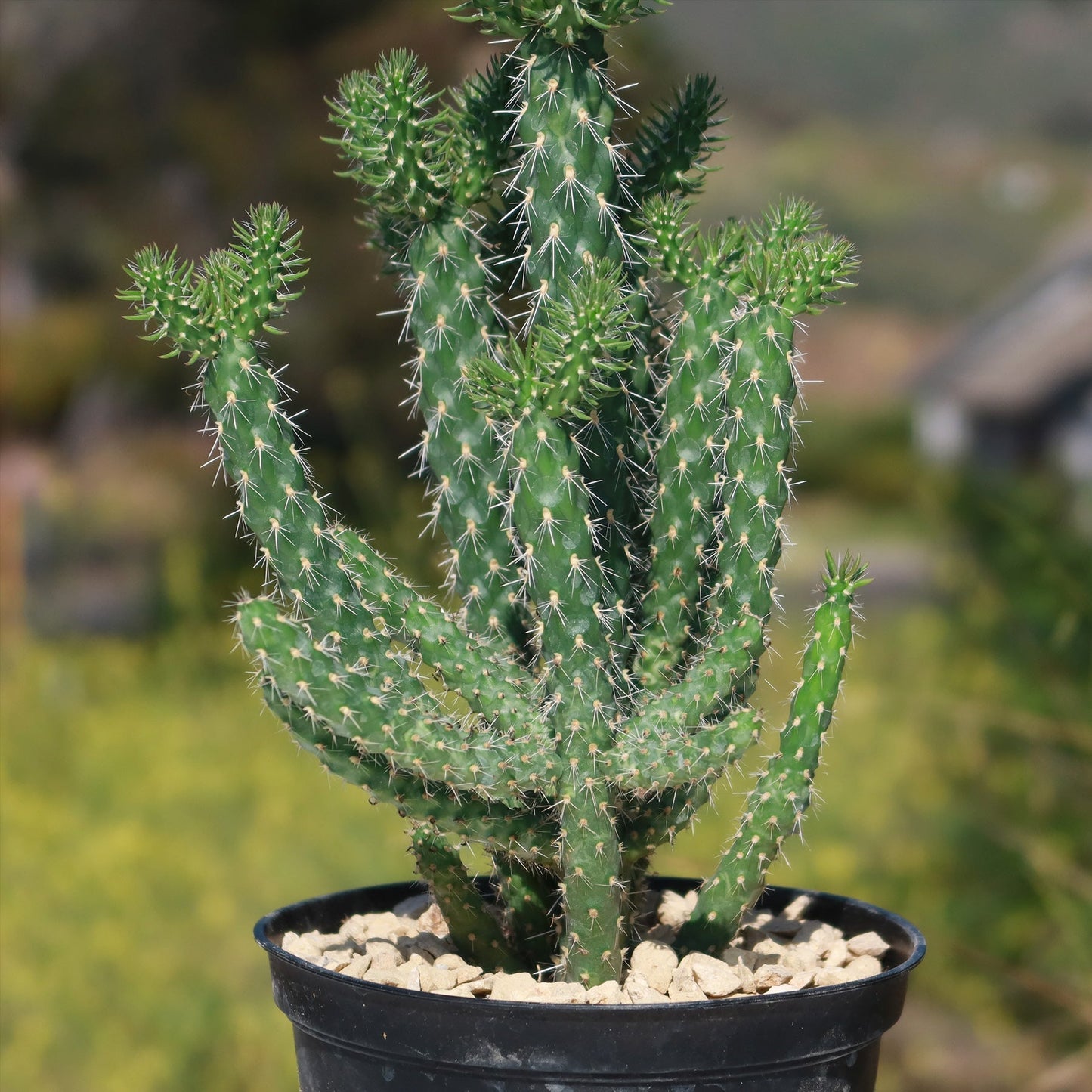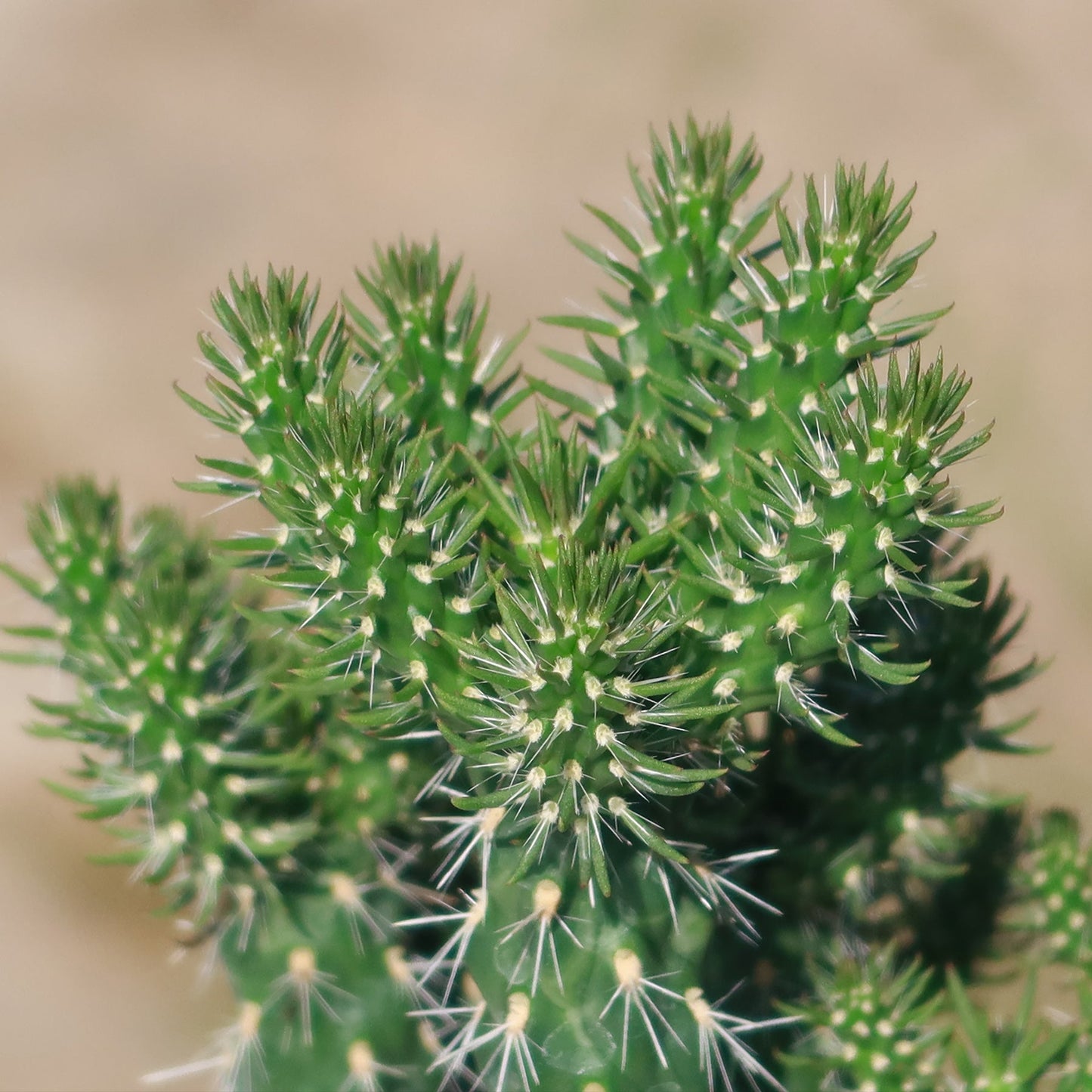mysite
Cholla Cactus - Cylindropuntia cholla
Cholla Cactus - Cylindropuntia cholla
Couldn't load pickup availability
Like other desert plants, the cholla cactus has adapted to survive in arid conditions. When it comes to watering the Chollas, it's important to follow the "soak and dry" method. This means giving your Cholla cactus a good watering until water drains out of the bottom of the pot and then allowing the soil to dry out completely before watering again.
In spring and summer, during the active growing season, the cholla cactus will appreciate more frequent watering. You can water it every 1-2 weeks, depending on the temperature and humidity levels in your area.
However, in fall and winter, during the dormant period, it's best to reduce watering to once every 4-6 weeks, as the cactus requires less moisture during this time.
Remember, overwatering can be harmful to the Cylindropuntia cholla cactus. Signs of overwatering include yellowing or wilting of the stems, soft and mushy roots, or the presence of mold or fungus on the soil surface. To prevent these issues, make sure to allow the soil to dry out between waterings and avoid leaving your summer grower cactus sitting in standing water.
For outdoor cultivation, find a spot that receives at least 6-8 hours of full sunlight daily. This could be a sunny patio, balcony, or garden area. Just make sure to protect the cholla cactus gardens from intense afternoon sun, especially during the hot summer months, as it can scorch the plant. If you live in a region with harsh winters, it's advisable to bring the cholla cactus indoors or provide some protection during freezing temperatures.
Remember, proper lighting is essential for the cholla cactus garden to thrive and maintain its vibrant and healthy appearance. So, find a sunny spot and let that natural light work its magic!
Optimal Soil & Fertilizer
When it comes to soil, the cholla cactus prefers well-draining soil that mimics its natural desert habitat. A mix of sandy soil, perlite, and peat moss works well for this cactus. Excess water drains away from this type of soil, preventing root rot and other moisture-related problems. You can also add some small rocks or gravel at the bottom of the pot to enhance drainage. Ideally, you want to use our that contains 5 natural substrates and organic mycorrhizae to promote the development of a strong root system that helps your cactus to thrive.
As for fertilizing, the cholla cactus doesn't require frequent feeding like some other cacti. It's best to fertilize sparingly, about once a year, during the active growing season in the spring. A balanced (5-10-5), water-soluble fertilizer with a low nitrogen content is recommended. Follow the instructions for the correct dilution ratio and apply it to the soil around the base of the Cylindropuntia cactus.
Remember, it's important not to over-fertilize the cholla cactus, as this can lead to excessive growth and weak stems. If you notice any signs of nutrient deficiency, such as pale or yellowing stems, you can increase the frequency of fertilization slightly. Always err on the side of caution and monitor the Cholla plant's response to the fertilizer.
Hardiness Zone & More
If you are growing your Cylindropuntia Cholla cactus indoors, it generally thrives in average room temperatures ranging from 65°F to 75°F. However, the jumping chollas can tolerate slightly cooler temperatures, down to 20°F during their dormant period in the fall and winter. It is one of those heat-tolerant cholla cacti and is well-suited to desert-like conditions with temperatures ranging from 80°F to 100°F. As for humidity, the cholla cactus is accustomed to low humidity levels, so there's no need to worry too much about it. Just make sure the air isn't overly dry, especially during winter when indoor heating can cause dryness.
For outdoor cultivation, the cholla cactus typically thrives in USDA zones 8 to 10. These zones are characterized by mild winters and hot summers. The Cholla cactus is a not very frost-resistant cactus, hardy to 28° F (or less if very dry). However, indoors it is better not to expose it to temperatures lower than 32° F.
Remember, the cholla cactus is a tough and resilient plant that can adapt to various conditions, but it's always best to provide it with an environment that closely resembles its natural habitat.
Propagating Cholla Cactus
Propagating the Cylindropuntia cholla cactus is an exciting and rewarding process. One common method is by using stem cuttings. To propagate your cholla cactus, start by carefully cutting a healthy stem segment from the main plant using a clean and sharp knife or scissors. Allow the cutting to dry and callus over for a few days to prevent rotting. Once calloused, you can plant the cutting in a well-draining cactus mix, ensuring that the bottom end is inserted into the soil. Keep the soil lightly moist and place the cutting in a warm and bright location, avoiding direct sunlight.
With time and proper care, your cholla cactus cutting will develop roots and grow into a new plant. It's a wonderful way to expand your cholla cactus collection or share it with fellow plant enthusiasts.
The Bottom Line
Overall, the cholla cactus (Cylindropuntia) is a fascinating and resilient cactus plant that thrives in arid and desert-like environments. With its unique and striking appearance, it adds a touch of natural beauty to any indoor or outdoor space. The cholla cactus is known for its ability to adapt to various conditions, making it a great choice for both beginner and experienced plant enthusiasts.
It requires well-drained soil, ample sunlight, and minimal watering to thrive. Whether you choose to cultivate it indoors or outdoors, the cholla cactus will surely captivate your attention with its spiny stems and vibrant blooms. So, if you're looking to add a touch of desert charm to your plant collection, the Cylindropuntia cholla cactus is definitely worth considering.
Share
